- Best Breweries in Portland Maine - November 4, 2022
- Best Japanese Hop Varieties - October 18, 2022
- Best Breweries in Portsmouth NH - October 2, 2022
There are few things in life more enjoyable than chugging a cold beer on a warm afternoon. And if this happens to come after playing some sport (watching it on a Sunday afternoon), or if I am forced to weed my garden in the sunshine- even better. If you ask me, the crisp golden goodness could very well be the most refreshing drink on earth. If consumed in moderation, it can even be pretty good for you too.
From humble beginnings, beer has evolved into one of the most consumed, and enjoyed, beverages on the planet. There are numerous types available, each with its own unique qualities. Two of my personal favorites are Pilsner and Lager. Let’s break them down and find out exactly what the difference is between these two outstanding brews.
Bottom Line Upfront
Lagers are diverse but are well-balanced beers. Pilsners are a type of lager that uses a specific malt and hop formula. I don’t recommend one beer style more than the other.
Both are easy-drinking beers with low-to-moderate ABVs, perfect for beer lovers and anyone new to beer. If you’re not sure which one to try, I suggest trying all of my recommendations to find your favorite beer style.
Main differences between Pilsner and Lager
The main differences between Pilsner and lager are:
- Pilsners are brewed using the Saaz hop, whereas Lager uses mostly Citra and Cluster hops. Switching to Saaz hops alters the flavor of the lager and is the main difference between the two.
- Pilsner offers a taste that is hoppy and intense, whereas Lager offers an aromatic taste that is cleaner, and crisper.
- Pilsners are a type of pale lager and are therefore typically lighter in color, whereas Lagers can be yellow/golden to dark in color.
- Pilsners were first brewed in the town of Pilsen in the modern-day Czech Republic, whereas lagers were first brewed in modern-day Germany and Austria
- Lagers taste more refreshing, whereas Pilsners taste spicier and hop-forward
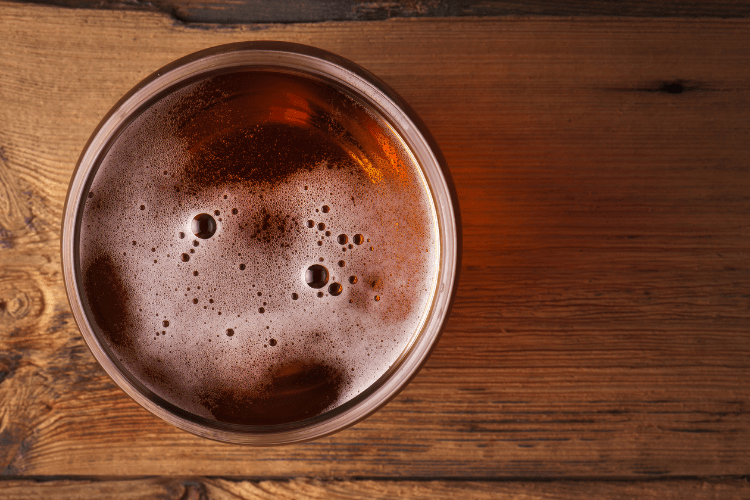
Features of a Lager
- Well-balanced flavor
- Crisp, perfect for a hot day
- Light in color
- Uses specific yeast for a robust flavor
- Not as hop-forward, no bitter flavor
Lager Pros and Cons
Pros
- Easy-drinking beer, light and mild in flavor
- Extremely diverse beers
- Traditional lagers aren’t hoppy, perfect for those who don’t like IPAs and bitter beers
- The yeast gives lagers a crisp flavor
Cons
- Can find some pretty bad lagers
- Traditional lagers are pretty generic

Features of a Pilsner
- Traditional Bohemian/Czech Pilsners use Saaz hops, which have a distinct herbal flavor
- Aromatic yet still light enough for a hot day
- Clean taste with a slight hoppy-herbal flavor
Pilsner Pros and Cons
Pros
- More robust taste thanks to the Saaz hops
- Not too bitter just contains just the right amount of hops for flavor
- Pilsner is technically a type of lager
Cons
- Usually has a low ABV
Pilsner Origins
Pilsner-style beer was introduced in 1839 by an intelligent individual named Joseph Groll. The circumstances surrounding the origins were fortunate, with the darker brew being described as a necessary accident.
To prevent the excess delicious brew from spoiling prematurely, he started brewing with the now infamous Saaz Hop. Paying homage to the Bohemian City Pilsen in which it was first produced, Pilsner was born and the world took notice.
Lager Origins
It was in the latter part of the 1835s that Anton Dreher developed the delicious brew called Lager, which back then was referred to as Vienna Lager. He was the guy who first started maturing his beloved beer under cold conditions, in Germany.
This practice was referred to as “Lagering”. This innovation, combined with natural ingredients, changed the way beer would be brewed forever. Not only did it forever shift the brewing landscape, but it also became a world-famous beer widely accepted as the all-time favorite.
Pilsner vs Lager Evolution: How Popular are they Today?
Pilsner Evolution
Today, we see a plethora of pilsner enthusiasts enjoying the kiss of the Saaz Hop on their lips.
Pilsner has evolved into the second most popular type of beer consumed all over the globe. That type of achievement certainly illustrates the unique, bold, and satisfying flavor that we’ve come to expect from the Saaz Hop. And with any good product, there will be change.
Today we can choose from a wide variety of Pilsners, some are lighter, while some are even more intense than the original. There are numerous types or variations of Pilsner available for consumption today, but all of these have originated from that very first brew.
Lager Evolution
Today, Lager Beer is the most popular choice of beer around the world. Being the darling child of the beer industry, it comes as no surprise that there are many different types of lagers. Considering that all Pilsners are forms of Lager, gives testament to the popularity of this refreshing beverage.
There are numerous types, styles, and brands of Lager available- but all stem from that original cold brew in Germany, paying homage to the cool, crisp taste synonymous with a good quality Lager.
How are they fermented?
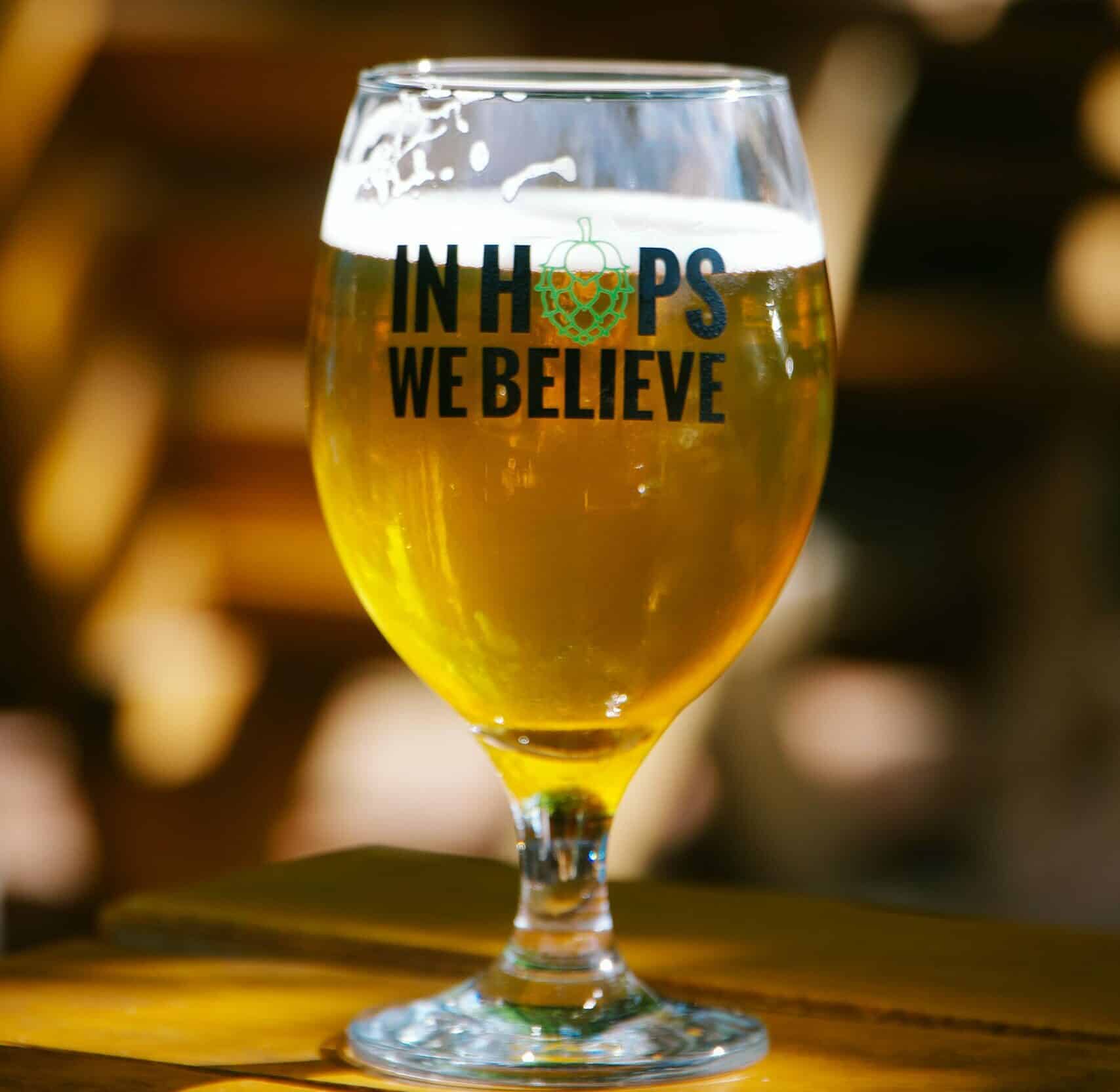
The fermentation process makes all the difference between these two popular types of beers. When combined with the ingredients, they are the two deciding factors when determining which style of beer is being brewed. That being said, the fermentation process dictates the beer. Let’s take a look at the differences between the two fermentation processes:
Main Differences: Fermenting Pilsner vs Fermenting Lager
The differences are quite simple. It all comes down to the ingredients. All Pilsners are lagers and the fermentation process is similar except for the malt and hops.
Lager and Pilsner are made using a bottom-fermenting technique. And yes, you guessed it, this technique requires bottom-fermenting yeast strains. These types of yeast strains are more effective at cooler temperatures. The optimum temperature for bottom-fermenting yeast strains is between 41- 50 degrees F (5-10 degrees C).
Ale is the other beer available and is made using a top-fermenting technique. This process requires top-fermenting yeast strains. Yeast strains like this are more effective and work well at higher temperatures. The optimum temperature for top-fermenting yeast strains is between 45 and 55 degrees F (7-13 degrees C).
What about the Ingredients?
Lager Ingredients vs Pilsner Ingredients
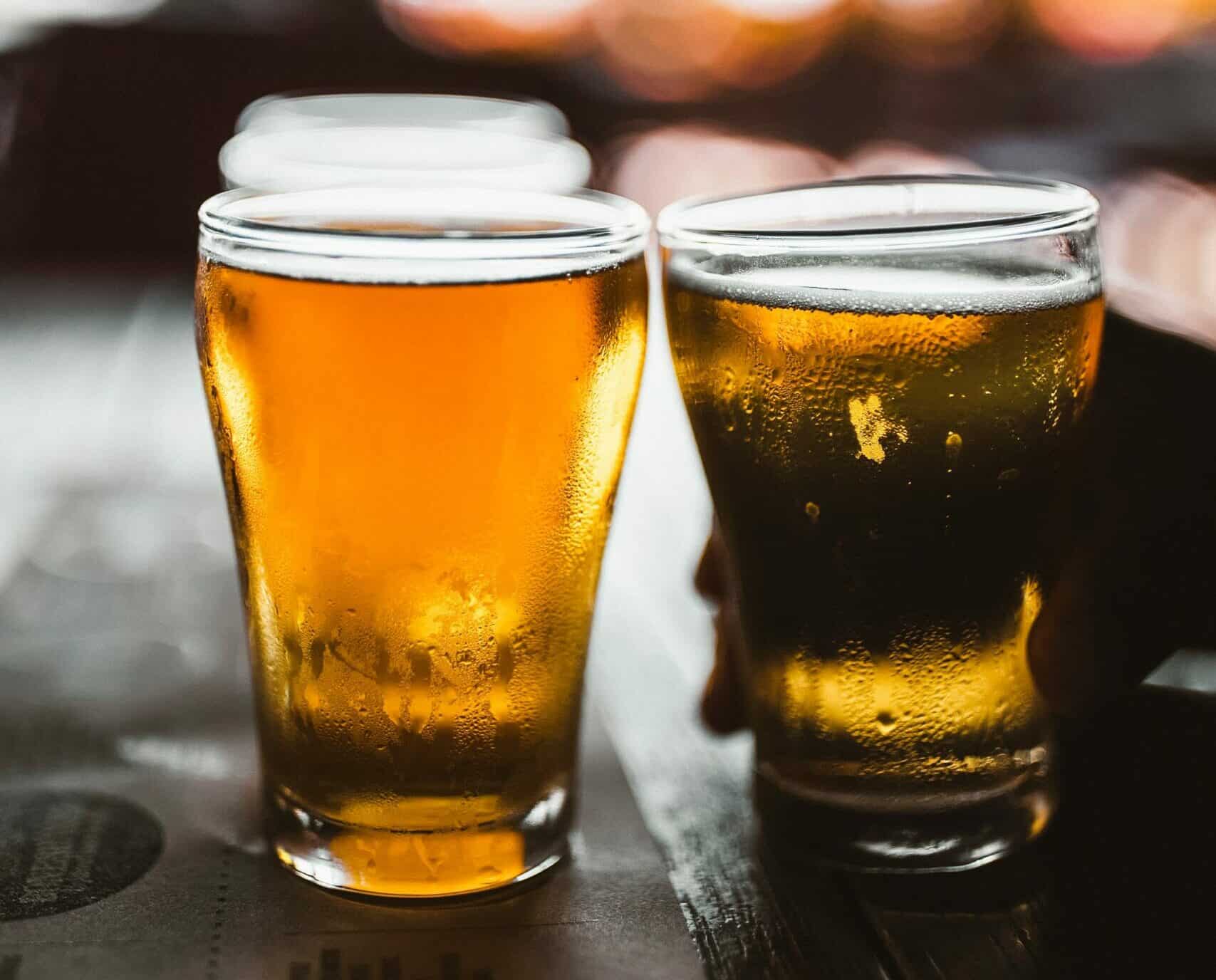
Lager Ingredients
Lager is a well-loved (and enjoyed) beer. Here are the ingredients that create that satisfying sip:
- Water – This is one of the key components of your brew and it is vital to ensure that it is of the highest quality. If you are fortunate enough to have access to natural spring water, this would be ideal. If not RO, filtered or distilled (boiled) water is best. Commercial breweries should use distilled water, and you should too if you want your brew to be as good as it gets.
- Hops – There are numerous types of hops being used to brew lager, the most common are the Citra and Cluster Hops.
- Yeast – When brewing Lager you will need a specialized Lager Yeast called Saccharomyces pastorianus. This bottom-brewing yeast is the perfect yeast for brewing numerous styles or types of Lager beer. If you are looking to brew your own lager, this is one element you can’t skimp on! The Lager Yeast is a key ingredient for making it, well, a Lager.
- Malt – Lager Malt is the malt of choice when brewing Lager beer. This quality malt was initially used to make English Pale Ale malt and is made from premium strains of English Barley. Once again, this is a key element for any Lager. Ensure you use Lager malt if you are making your own Lager.
Pilsner Ingredients
When brewing a hoppy Pilsner style beer the following ingredients are what give the brew its intense taste Pilsner is known and loved for:
- Water – Just like brewing Lager style beer, the water used when brewing Pilsner beer must be of the highest quality. Not your average tap water, but distilled and as clean as possible.
- Hops – Brewers use the locally sourced Saaz Hop for Traditional Bohemian Pilsner. But if you want to brew the Traditional German Pilsner, use the Tettnang or the Hallertau hops.
- Yeast – Pilsner Beer is also brewed using Lager Yeast Saccharomyces Pasorianus.
- Malt – The preferred malt for brewing Pilsner beer is a unique pale malt called Pils Malt or Pilsen Malt. When compared to regular two-row, Pilsen Malt offers tastes that are significantly crisper and thinner, which is perfectly transferred over into the beer. Ranging between 1.1 and 2 degrees Lovibond, Pilsen Malt is typically very light in color.
Alcohol Content: Pilsner vs Lager
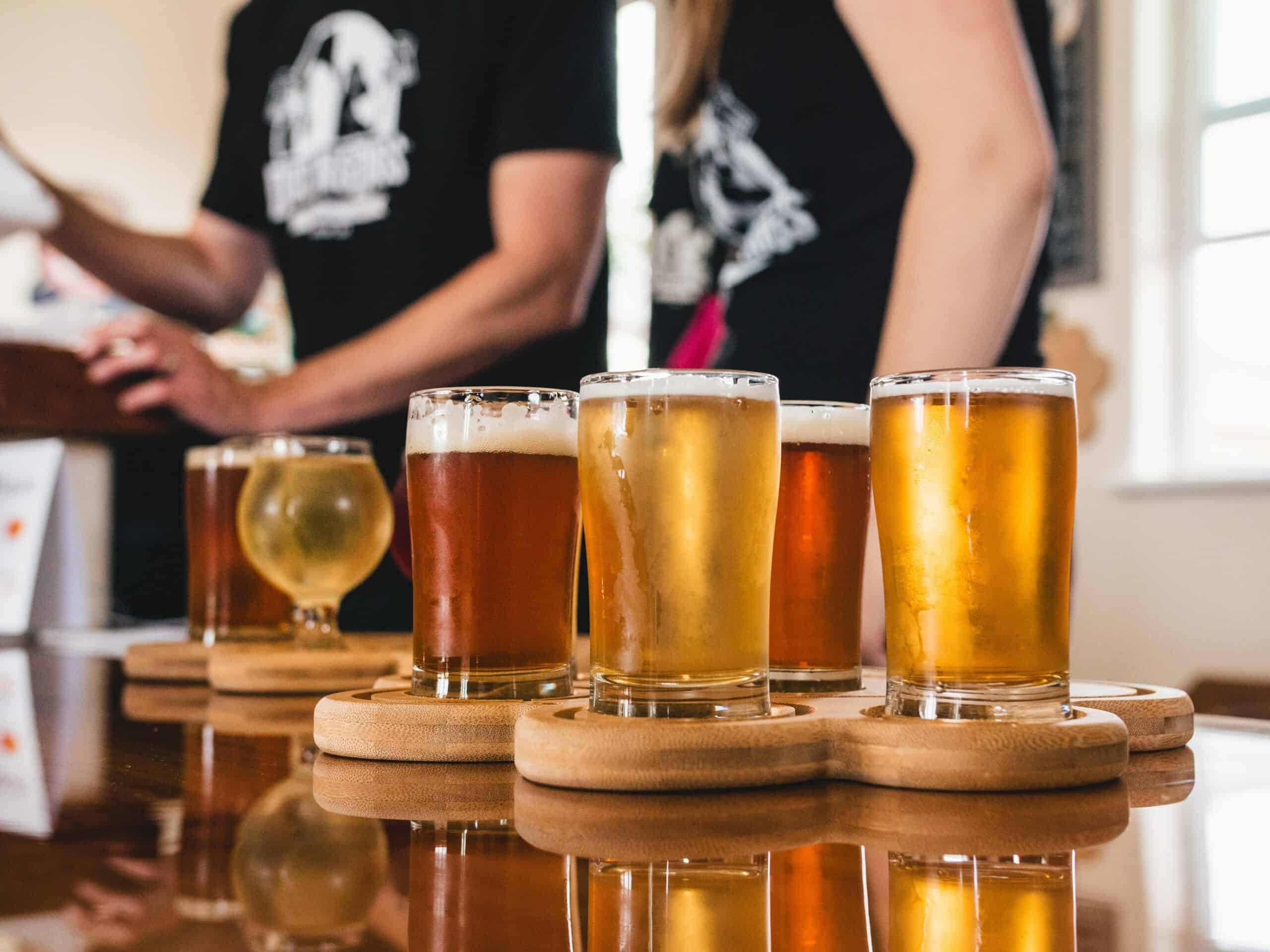
- The alcohol content of Pilsner beer can and does vary, but it typically sits around 4.5%.
- The alcohol content of Lager can range anywhere between 3%-9%.
This means if you’re looking for the stronger of the two, you could settle on a high-range Lager. Pilsner, however, does deserve some points for being the more consistent of the two.
Which Style is Best?
Like many beer enthusiasts, I am a huge fan of both styles of beer. But, Lager takes the prize. My favorite is an ice-cold Lager, hands-down. With a Pilsner, I enjoy the lighter type of Pilsner and appreciate the thirst-quenching and refreshing taste.
However, there are some types of Pilsners, particularly the darker versions, that are too strong and spicy for my palate. The bold and intense flavor of the pilsner’s hops can be overpowering and overwhelming and it can taste unbalanced. But that’s just me. If you enjoy that bold flavor, and you have the palate for it- your favorite might just be the intense Pilsner.
Lager, for me, (and it seems many beer drinkers around the world), is the perfect combination of quality ingredients and expertise that stems from generations of brewing excellence. The crisp refreshing thirst-quenching taste is second to none. Just describing it makes me want to reach into the fridge and crack open an ice-cold Lager. It’s 5-o’clock somewhere, right?
Taste of Lager vs. Pilsner
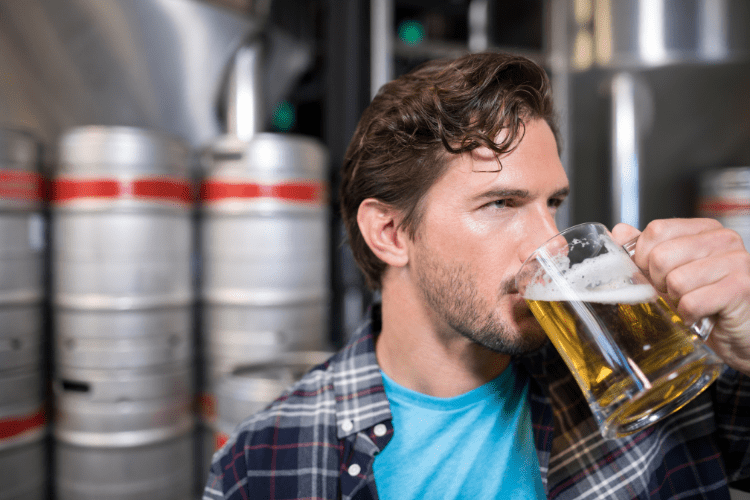
I personally love lagers and Pilsners. There are times I crave one over the other, but I don’t have a favorite. I would definitely agree that lagers and Pilsners have very distinctive tastes and that could help determine which one you should drink.
Lager Taste
Lagers are sleek, easy-drinking beers. The right lager is very crisp, all thanks to its lower hop and malt content. Lagers are also very diverse.
There are numerous lager styles and they all have their own distinctive tastes. Here are some examples plus their taste description. Keep in mind that this isn’t the full list of lagers, just some of the more popular ones.
- Bock: rich and toasty with a smooth mouthfeel
- Dunkel: maltier than a traditional lager, usually has notes of toffee, nut, and even chocolate
- Marzen/Oktoberfest: rich flavor that’s slightly bitter but still balanced with malt
- Helles: sweet and bready with slight spice and bitterness from German hops
Pilsner Taste
Since a Pilsner is a type of lager, both beers have a similar taste and mouthfeel. However, the classic Czech Pilsner has a hoppier flavor.
That doesn’t mean this beer style is bitter — Saaz hops have a spicier taste. Saaz hops have a natural earthy flavor, with some floral notes thrown in. There are multiple types of Pilsners and each type has its own distinct flavor. Here are the different types and what they taste like:
- German Pilsners (nicknamed Pils): German Pilsners mainly use Hallertau and Spalt hops — you still get the spicy and earthy flavors but it’s slightly sweeter since it’s brewed with more malt
- Belgium Pilsner: more bitter though still light and refreshing
- Dutch Pilsner: has a slightly bitter and spicy flavor but is still balanced
- French Pilsner: very unique taste — maltier and brewed with Strisselspalt hops, which are also spicy but more pleasant in flavor thanks to the citrus notes
Brewing a Lager vs. Pilsner
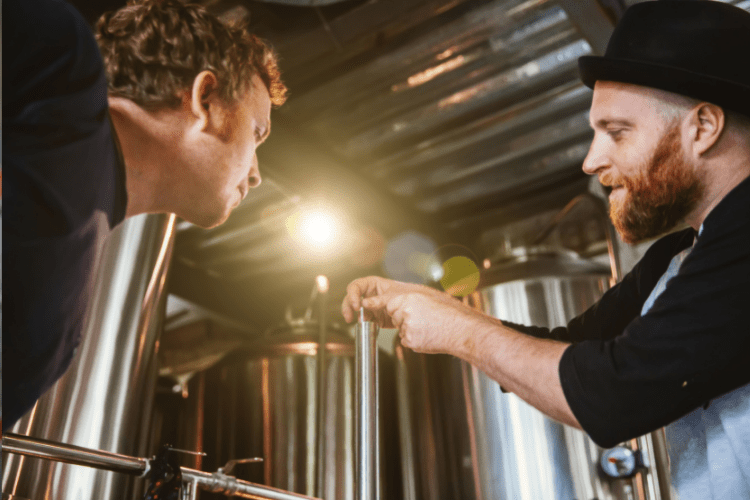
Since a Pilsner is a type of lager, both have many similarities in the brewing process. Both are bottom-fermenting beers, which is a chemical reaction caused when the yeast is brewed at the bottom of the barrel.
The yeast is brewed for longer time periods and at colder temperatures. This is why lagers have that clean taste and light mouthfeel.
The main aspects separating a Pilsner from a lager are the hops and malt used. In addition to the spicy Saaz hops that I covered already, Pilsners also use a specific type of malted barley to better define the flavor and aroma.
My Favorite Lagers
Lagers are some of the most popular and widely consumed beers out there. But what are some of the best examples of lagers? Here are a few of my recommendations.
Weihenstephaner Helles
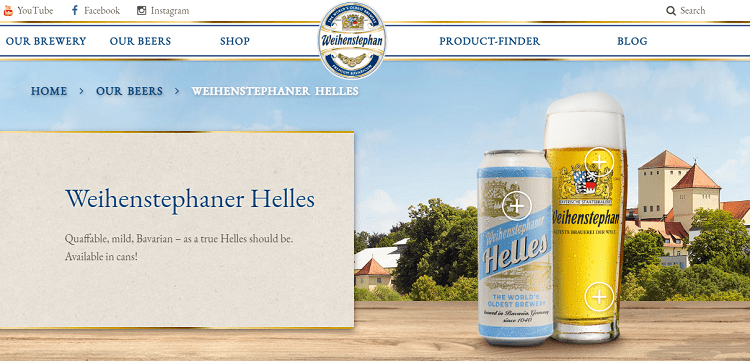
Weihenstephaner is the oldest brewery. Located in Freising, Germany, this brewery still brews traditional German beers and their assortment of brews are some of my favorite in the world. But when I see the Helles, I always grab this one. It’s a light beer with that perfect sweet bready flavor.
The malt is perfectly balanced with earthy hops for a clean flavor. There are plenty of flavors here but it’s still crisp enough for a hot day.
Coppertail Brewing Dunk
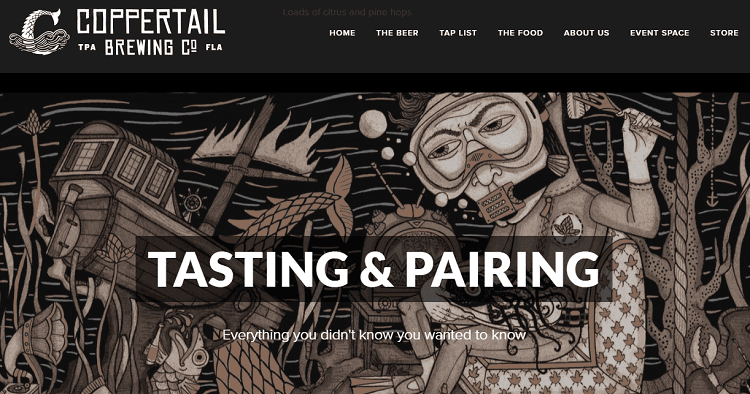
This is a classic Munich-style Dunkel by Tampa brewery Coppertail. It is a little more bitter than the average Dunkel but the hops are well-balanced by the malt.
Compared to other lagers, Dunkels are heavier due to the richer flavor. It’s a seasonal beer. I can’t find when they have it, but the last time I had this beer was in February. I assume it’s a winter beer.
Dieu du Ciel Helium
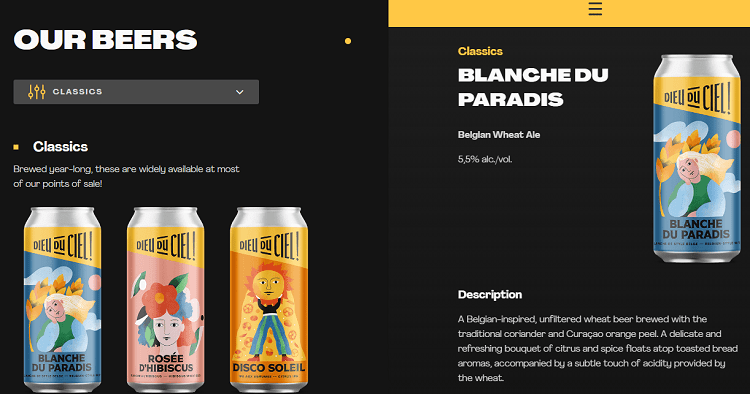
I actually just tried this beer the other day and I loved it! If you’re looking for a Helles in Quebec, this is probably the best option. Helium has the perfect blend of malt and hops, so it’s a sweet beer with a hoppy bite. I had this beer with some sushi — I know, weird combination, but it actually worked.
Live Oak Brewing Oaktoberfest
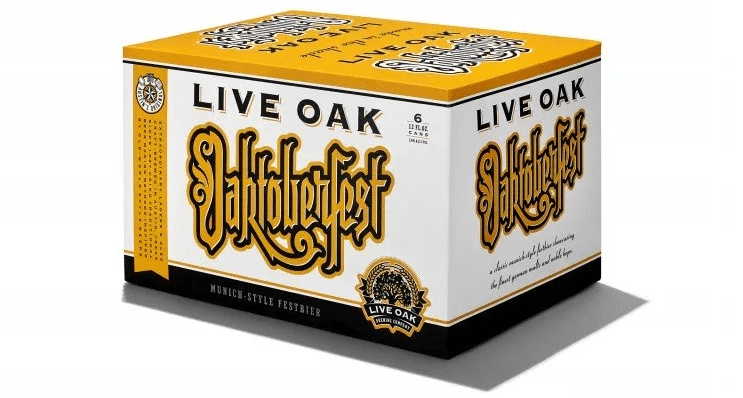
If you’re in Texas for Oktoberfest, I suggest stopping by Austin’s Live Oak Brewing and getting the Oaktoberfest.
Traditional Marzen/Oktoberfest beers are on the amber side in color with a full-bodied flavor. Live Oak definitely perfected the classic Bavarian Oktoberfest style.
The beer has a toasty aroma with that traditional malty sweetness and bready undertones. Because of the light hop content, it’s still light enough to drink several of these beers.
Ayinger Celebrator
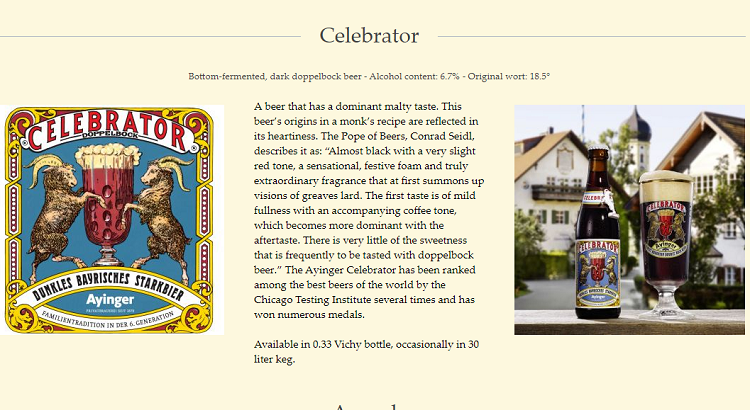
Now I know I’ve had Ayinger beer before but can’t remember if I had Celebrator or not. Either way, I wanted to recommend a beer from this brewery and haven’t recommended a bock yet.
This beer is actually a doppelbock, which translates to “double bock.” As the name suggests, this style is a stronger version of traditional bocks. You definitely taste the bready yeast flavor but this beer is on the darker side. You also taste some sweet malt.
What are the most popular Lagers on the market?
- Corona: Corona Lager offers a great balance between hop bitterness and fruity flavors. This light-bodied medium Lager is brewed with banana chew fruit yeast and a natural malty cereal. This combination results in a refreshing and satisfying beer.
- Coors Light: Coors Light is a light beer that doesn’t offer much taste or flavor. It is lightly bitter on the palette and is watery when compared to other beers in this category. I am not a fan of this brew, and when I drink it I feel like I have been cheated. I wouldn’t recommend this beer to anybody.
- Budweiser: Budweiser offers a taste that is clean and crisp. It is perfectly balanced, with light traces of fruity and citrus notes, combined with noble hops and quality malt. Budweiser is golden in color, very drinkable with an elegant finish. Budweiser is the perfect beer when having lunch.
- Heineken: Heineken is also brewed with banana chew fruit yeast and natural malty cereal, but the result is quite different from Corona. Heineken is clean, round, and crisp and goes down way too easily. It is extremely well-balanced with just the right amount of hop bitterness and sweet fruity flavors.
- Guinness: Guinness is a remarkable beer that has earned its reputation as one of the best beers ever produced. It is well-balanced, creamy, and smooth, with a sweet aroma. It offers hoppy bitterness and malty sweetness, with undertones of chocolate and coffee. Guinness is brewed using roasted unmalted barley, this results in a beautiful roasted flavor that has made this beer so popular.
Examples of Pilsners
While I’m recommending traditional Bohemian Pilsners, I also want to recommend some other types of Pilsners from various other regions.
Pilsner Urquell
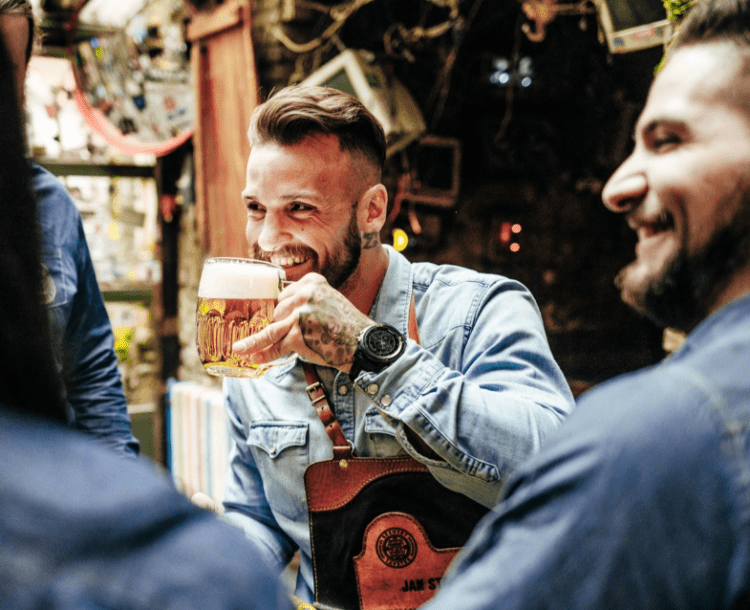
When it comes to traditional Bohemian/Czech Pilsners, you have to try the original first. Yes, the original Pilsner brewed by Josef Groll is still brewed and offered at the brewery Pilsner Urquell, located in Pilsen.
Since this is where it all started, you’ll be tasting the best of the best. While the bitter and spicy Saaz hops may be a shock, you’ll definitely enjoy the historic taste of this beer.
Weihenstephaner Pils
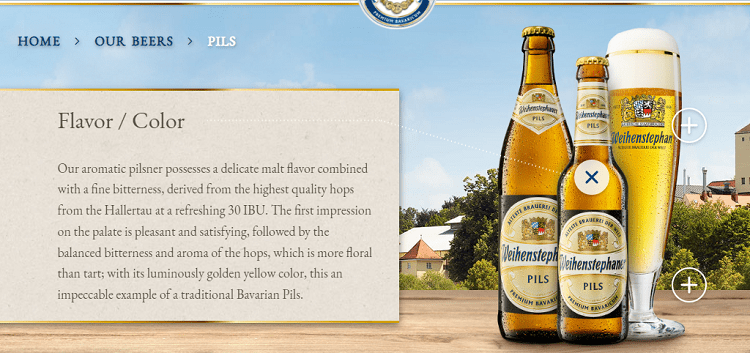
If you want a German Pilsner, the best place to start is my favorite German brewery Weihenstephaner. German Pilsners are more moderate in flavor than their Czech counterparts, but that doesn’t mean they’re not delicious.
I think this beer has a maltier flavor with that slight yeast-bread taste. It has a pale golden color that’s pretty to look at.
Live Oak Brewing Pilz

Pilz is one of my favorite beers to drink when I’m at Live Oak Brewing. It’s the best Czech Pilsner I’ve had in the states and this beer should be a standard when you visit the brewery.
Live Oak brews this beer with Saaz hops and traditional Pilsner malt. Everything is perfectly balanced, so you don’t taste too much bitterness or maltiness.
The taste is authentic enough for craft beer nerds and the flavor is mild enough for those who aren’t fans of beer. This is the perfect beer to enjoy during those hot Texas summers.
Avant-Garde Jet Set
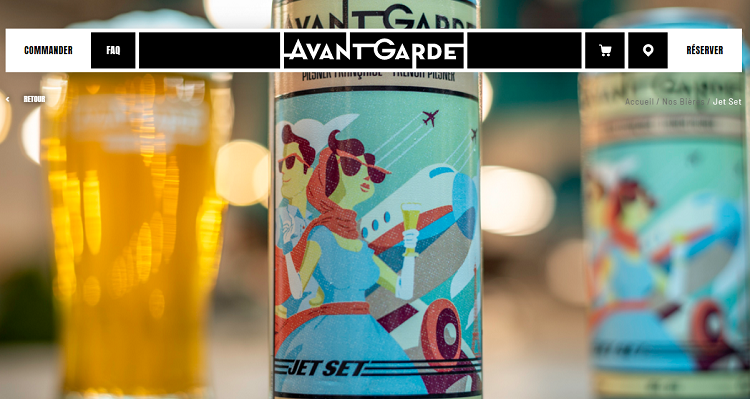
I don’t often find French Pilsners but Avant-Garde Brasserie in Montreal makes the best one I’ve had. French Pilsners are smoother than Czech Pilsners but don’t compromise on the flavor.
Jet Set is brighter in flavor, featuring notes of citrus, grapefruit, and floral hops. This beer is on the lighter side but is still well-bodied.
Cigar City Pascua Pilsner
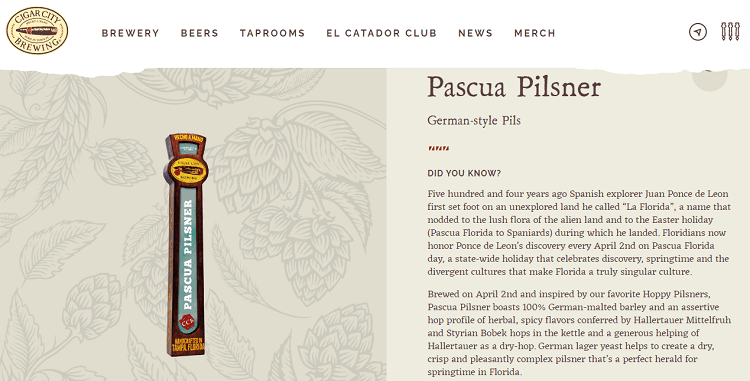
If you want another German Pilsner option then I suggest choosing the Pascua Pilsner. While this one is earthier than traditional German Pilsners, the malts definitely add more of an authentic sweet character.
I wouldn’t call this a light drinking beer — it’s medium-bodied, so easy enough for a beginner but definitely more ideal for craft beer connoisseurs.
What are the most popular Pilsners on the market?
- Trumer Pils: Trumer Pils is a refreshing German-style beer that is versatile and pairs well with any food. This light-bodied beer offers a distinctive aroma of hops combined with Brisk Carbonation. The flavors are bold and strong but well-rounded. This is a great choice as an after-dinner beer.
- Palatine Pils: Palatine Pils is an interesting hop-accented pale ale lager and is offered as a German-style pilsner. It is crisp, clean, and brewed using specialized lager yeast. This is a great beer for hot summer afternoons with friends around the barbeque.
- Vliet Pilsner: Vliet Pilsner is widely considered one of the finest beers on the planet. It offers an exceptionally crisp and clean taste, which is slightly sweet upfront and then becomes hoppy on the finish. Vliet pilsner is brewed with herbal hops which result in an earthy and fresh undertone. The quality of this beer is unmistakable.
- Luppolo Pilsner: Luppolo Pilsner is expertly brewed using only premium European hops and malts. It offers a thirst-quenching and refreshing taste that results from a unique dry-hopping brewing technique. This Pilsner Is lighter than most and perfect for beer enthusiasts with an under-developed palette.
- Pilsner Urquell: Pilsner Urquell is arguably one of the most popular beers around. Notorious for clever marketing campaigns, they brew a damn good beer too. This Pilsner is very drinkable with a clean, crisp, and round flavor, it is perfectly balanced. Additionally, it offers delectable malty flavors that are smooth and easy on the palette. This is the perfect “anytime” beer.
Other Types of Beer to Consider
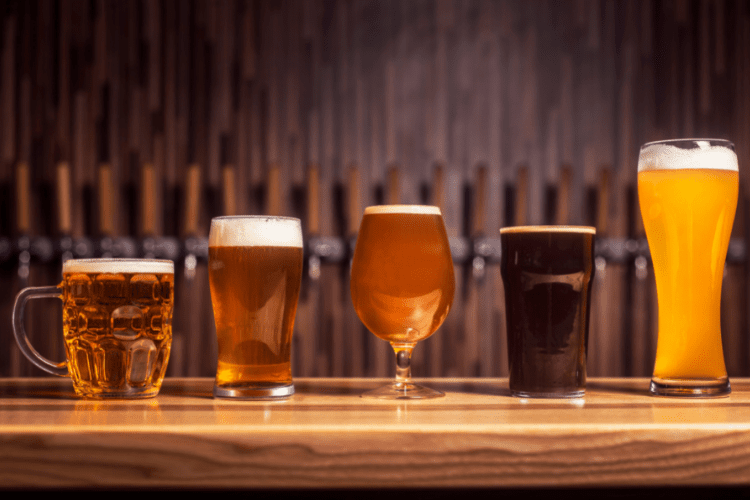
Have you tried a Pilsners or lager and aren’t a fan? Maybe you want more variety in your beer? Here are some beer styles to try instead of Pilsners and lagers.
Pale Ale
Pale ales are brewed using pale malt and ale yeast. Taking the name into consideration, these ales are lighter in color. This style is hop-forward, but not as hoppy as the IPA.
There are some hoppier varieties of pale ales and also some maltier options. Like the Pilsner and lager, these beers usually have moderate strength and are meant to be easy-drinking beers.
Brown Ale
As the name suggests, brown ales are brown in color but have a mild flavor, similar to an amber ale. The color derives from brown malt, though the beer is typically brewed with hops to balance out the maltiness. British brewers developed this style in the 17th century.
It has a medium-to-low body, making it a good option for beginners who want to expand their craft beer palate.
Porter
The porter is another British beer style, developed in the 18th century and derived from the brown ale. These beers are dark in appearance, but unlike the similar stout, porters are brewed with more hops.
The dark color derives from brown malt, giving the beer its traditional roasted yet creamy flavor. There may be a slightly bitter taste from the hops, but the hops are typically balanced with the malt.
IPA
Ah, the IPA. You either love them or hate them. IPA stands for India Pale Ale. British sailors brewed this beer, using more hops to improve its shelf life.
The sailors would take long trips to India and needed a beer for their journey. The hop-forward style results in its bitter flavor that is either loved or hated. I personally love IPAs but I don’t judge those who prefer smoother beers.
Stout
The stout is the quintessential dark beer. It’s a heavy-bodied beer, popularized in Britain and Ireland. Stouts often have strong ABVs, so don’t choose this brew if you want an easy-drinking beer. What I like about stouts is the complexity. You can choose a smoother oatmeal stout or a bitter coffee stout.
See also: How to Find the Best Coffee Stouts.
Frequently Asked Questions (FAQ’s)
Question: Is Bud Light a Pilsner or a Lager?
Answer: Bud Light and Bud are both Lagers that are made in the United States.
Question: What is the difference between Lager and craft beer?
Answer: The main difference between Lager and Craft Beer is the quality of the ingredients that are used. When adding malt, larger breweries often cut the malt with corn, rice, or sometimes even both. The strategically chosen malts are what give the beer flavor and color. Craft breweries use 100% malt when brewing their beer, and this is one of the reasons that craft beer is so delicious and more expensive.
Question: Is Lager better than Ale?
Answer: There are two main types of beer, lager, and ale. Ale offers a fruity and sweeter taste and tends to be more full-bodied. Lager offers a taste that is cleaner and crisper. Lager also allows for the addition of hops and malts to enhance the flavor.
Question: What is the difference between Kolsch and Pilsner?
Answer: At first glance, these two beers appear to be similar, and both are seriously delicious to drink. The main difference between the two is Kolsch being an Ale and Pilsner being a bitter-tasting Lager. Additionally, the Pilsner offers a higher alcohol content and Kolsch offers a flavor that is slightly more complex.
Question: Is Stout better than Pilsner?
Answer: Both of these beers are refreshing and delicious but offer significantly different qualities. Stouts are generally sweeter, maltier, creamier, and much darker in color. Stout is versatile and can be infused with elegant flavors like coffee, caramel, and chocolate. Pilsner is indicative of a traditional Lager and offers flavors that are bitter and hoppy.
Conclusion
Both Pilsner and the Lager are excellent beers, and at the end of the day, it comes down to your personal palette. For me, I will always reach for a Heineken on a warm sunny afternoon. The thirst-quenching and refreshing taste cools me down and satisfies all of my needs. If I am out and about with my mates, at a sports bar, lively club, or an upmarket restaurant, then a cold light Hansa Pilsner is my beer of choice. The bold and aromatic flavors keep my thirst at bay and set the tone for a fun and relaxed evening.

